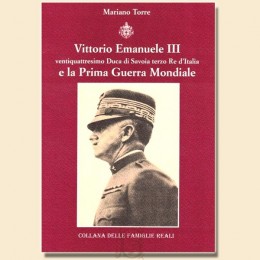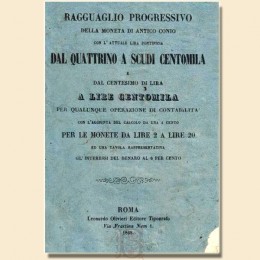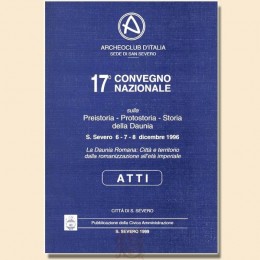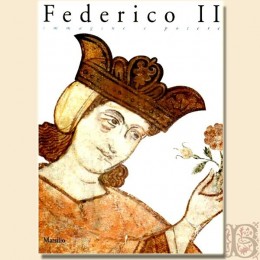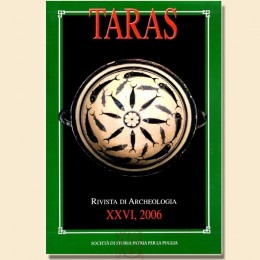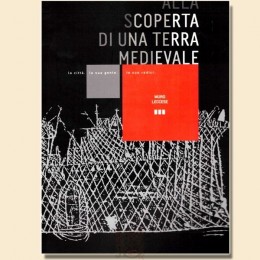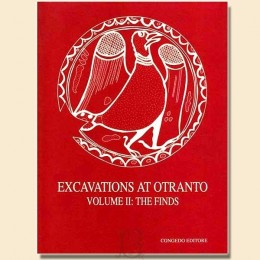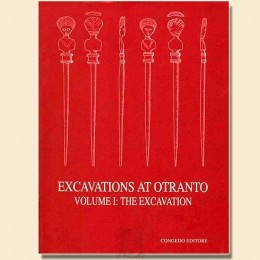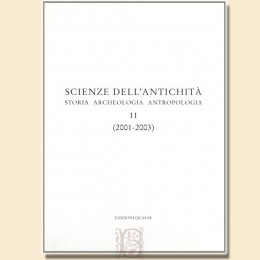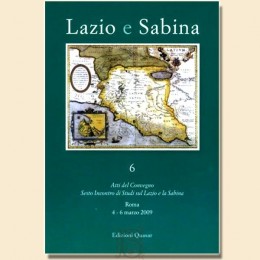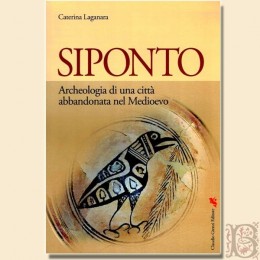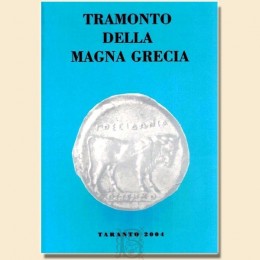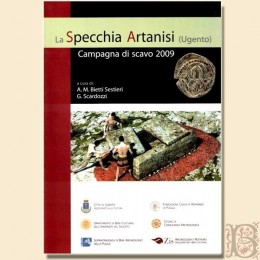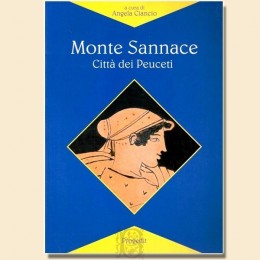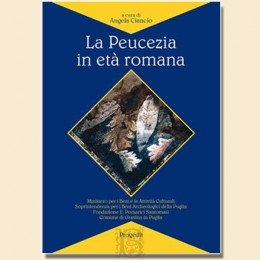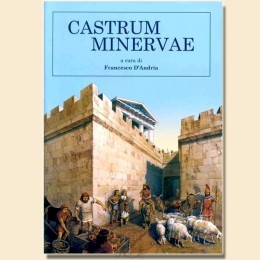Various
-
Tower, Vittorio Emanuele III
€35.00Mariano Torre, Vittorio Emanuele III twenty-fourth Duke of Savoy third King of Italy and the First World War, sn, slsa, pp. 181, richly illustrated, 24 cm, br. and.
Royal family necklace.
An interesting and very rare biography of the numismatic king.
In excellent condition.
-
Progressive balance of the...
€42.00Progressive return of the coin of ancient minting with the current papal lira from quattrino to hundred thousand scudi and from one hundredth of a lira to one hundred thousand lira. For any accounting operation with the addition of the calculation from one to one hundred for the coins from 2 to 20 lire and a table representing the interest on money at 6 per cent, Leonardo Olivieri Editore Tipografo, Rome 1868, pp. IV, 208, 20, 1 pl. folded. with Table of interest at 6 per 100 calculated by days and by months, 19 cm, br. and. protected by coeval blank paper. Extinct library pencil placement signature on the title page, insignificant lack in the lower right margin of the first two leaves, minimal traces of use, otherwise in more than good condition.
Very rare.
-
The Roman Daunia: city and...
€25.00National conference on prehistory, protohistory, history of Daunia. San Severo 6-8 December 1996. The Roman Daunia: city and territory from the Romanization to the Imperial Age. Proceedings, edited by Armando Gravina, Archeoclub d'Italia, San Severo 1999, pp. 461, richly illustrated, 24 cm, br. and.
The volume includes interesting contributions including: P. Principe, Teanum Apulum in the Second Punic War: the numismatic documentation.
Other present works: M. Silvestrini, Aecae, Luceria, Arpi: notes on the “gentes” of the three Roman centers of the Celone valley; A. Gravina, Some rural settlements between lower Fortore and southern Gargano. Topography notes; J. Mertens, Notes for the topography of Bovino in Roman times; M. Corrente, Canosa: the Town Hall; L. Di Cosmo, Cases of reuse in the church of Santa Maggiore di Siponto; R. Compatangelo Soussignan, Centuriation without settlers? The case of Canosa in the framework of the royal Apulia et Calabria; L. Pietropaolo, Roman ceramics in Daunia between Romanization and the Late Antiquity. Notes on production and dissemination; L. Notarangelo, Diomede in Turi and Metaponto: for a rereading of schol. to Pind. Nem. X 12; F. Grelle, Settlement forms, territorial planning and municipal organization in the Celone district; J. Mertens, Herdonia, Roman city of Daunia; F. Hilgert, The mosaic floors of the monumental complex of San Giusto (Lucera): preliminary report; L. Marchi, The Venosian district: documents for a Romanization process; E. Casteels, The town hall of Teanum Apulum; O. Dally, The sanctuary in San Leucio di Canosa di Puglia; F. D'Aloia, Imported tableware from late antiquity archaeological contexts from the villa of Agnuli in Mattinata; M. Mazzei, Introduction to the Conference; G. Legrottaglie, The portraiture of the Roman age in Lucera; L. Casavola, The amphorae of the Roman villa of Agnuli (Mattinata-Foggia); M. Mazzei, Lucera; AG Blundo, Roman funerary monuments in Daunia; G. Volpe, For a history of the agricultural landscapes of Roman Daunia; G. Volpe, Ports, routes and trade in the Roman Daunia; M. Chelotti, General picture of imperial property in northern Apulia; MG De Fino, Recent epigraphic acquisitions from Orsara di Puglia (Foggia). Notes for a history of the territory; G. De Felice, Recent excavations at the Roman bridge over the Carapelle (Ordona, FG); M. Mazzei, Siponto: the Colony; L. Todisco, On some ideal types in the statuary of the imperial age in Daunia.
Slight traces of use on the paperback, otherwise in more than good condition.
-
Frederick II. Image and power
€33.00Frederick II. Image and power, edited by Maria Stella Calò Mariani and Raffaella Cassano, Marsilio, Venice 1995, pp. XXXI, 603, richly illustrated, 29 cm, br. and.
Catalog of the exhibition held in Bari at the Swabian Castle from 4 February to 17 April 1995, as part of the celebrations for the eighth centenary of the birth of Frederick II. Powerful volume full of images and scientific contributions.
Note the presence of the contribution of Michele Pannuti, The coinage of Frederick II of Swabia in southern Italy and Sicily. From the Index: Maria Stella Calò Mariani, Introduction - The historical and geographical horizon of the Kingdom of Sicily (JM Martin, Diversity and unity of the kingdom - CD Fonseca, Federico II and the ecclesiastical institutions of the kingdom - A. Burruso, Federico II and the Arab-Islamic cultural tradition - P. Corsi, The Byzantine world - F. Cardini, Frederick II's crusade - D. Jacoby, The overseas imperial dimension: Frederick II, Cyprus and the Kingdom of Jerusalem) - The image of the sovereign (MS Calò Mariani, Image and power - R. Elze, The symbolism of power in the age of Frederick II - F. Cardini, The imperial eagle - E. Castelnuovo, The face of Federico - PC Claussen, Creation and destruction of image of Frederick II in the history of art. What remains?) - The court (MS Calò Mariani, The art and the court - C. Bertelli, The Veroli cross of the Cistercian abbey of Casamari - P. Moliterni, Legere scribere et cantare sciebat et cantilenas at cantiones invedere. Music and dance at the time of Frederick II - H. Toubert, Frederick's miniature from the court to the city - ME Avagnina, An unpublished fresco of a courteous subject in Bassano del Grappa: Federico II and the court of the da Romano - F. Zuliani, The frescoes of the abbey palace of San Zeno in Verona - R. Poso, Diffusion of shamites, jasper and embroidery in the thirteenth century - F. Magistrale, Latin and Greek written culture: books, documents, inscriptions - P. Morpurgo, Federico II and nature - A. Paravicini Bagliani, Federico II and the cura corporis - G. Orofino, The scientific codes) - The Kingdom (MS Calò Mariani, State yards and ecclesiastical yards - F. Zezza, The materials of Frederick's architecture in Puglia - MS Calò Mariani, The contribution of archeology. Castel Fiorentino - P. Beck, The imperial domus of Fiorentino in Capitanata - F. Piponnier, The medieval house in Fiorentino - CAM Laganara Fabiano, The ceramics in the site of Fiorentino - A. Busto, AM Melilli, The metal and glass finds in Fiorentino - J. Mertens, The castellum of Ordona - T. Springer, S. Fulloni, The Benedictine complex of the Holy Trinity on Monte Sacro, Gargano - B. Haas, The vitreous finds from the excavation campaign: 1989 and 1990 in the Benedictine abbey of Holy Trinity on Monte Sacro - U. Kindermann, Abbot Gregorio di Montesacro as an exponent of the spiritual-Latin culture in Swabian Puglia - S. Patitucci Uggeri, Ceramics in Brindisi in the Frederick era - R. Di Paola, For the knowledge of Swabian architecture in Puglia. The contribution of the restorations - Fulvio Resta, The portal of the palace of Foggia - N. Tomaiuoli, The palatium of Lucera - M. Benedettelli, The castle of Bari - M. Milella, The archaeological investigations inside the castle of Bari - D. Ciminale, The excavation in the east wing of the castle of Bari (July-November 1991) - A. Lorusso Bolettieri, The sculptural decoration of the castle of Bari - M. Pasquale, The castle of Trani - M. Benedettelli, The castle of Barletta - G. Fuzio, A. Simonetti, The castle of Monte Sant'Angelo - M. Benedettelli, The castle of Gravina - G. Matitecchia, The castle of Brindisi - A. Pepe, M. Civita, The cathedral of Altamura - W. Schirmer , Castel del Monte: observations on the building - D. Sack, Castel del Monte and the East - MS Calò Mariani, Castel del Monte. The ornamental dress - G. De Tommasi, Castel del Monte: the restorations and the image - A. Pepe, Swabian settlements in Terra d'Otranto - B. Vetere, Federico and Salento - L. Santoro, Swabian settlements in Campania - MP Di Dario Guida, Calabria federiciana - MS Calò Mariani, The space of idleness and celebration - P. Mane, The Opus ruralium commodorum by Pietro de 'Crescenzi - H. Bresc, The gardens of Palermo - B. Van den Abeele, Frederick II falconer: the destiny of De arti venandi cum avibus - MS Calò Mariani, The ornamentation and the furniture - Id., The capital with angular heads in the Diocesan Museum of Troia - L. Castelnuovo-Tedesco, The capital and the head of a woman from the Metropolitan Museum of Art in New York - MS Calò Mariani, The Swabian inheritance - D. Aquilano, Stucchi from the former Augustinian convent of Vasto - ML Christian texts, Tuscany from Federico II puer Apuliae to Nicola de Apuliae - Id., Tuscany and Nicola Pisanus - F. Tateo, Finds and memories of Frederick II in Italian literature - F. C ardini, Federico II. Memory and Myth) - Catalog of works - Bibliography, edited by Marcella Chelotti.
Minimal traces of use on the paperback, otherwise in more than good condition.
-
Taras, Journal of archeology, n....
€35.00Taras. Archeology magazine, National History Society for Puglia, Bari, n. XXVI, 2006, pp. 88, richly illustrated, 29 cm, br. and.
Much of the magazine is dedicated to the contribution of T. Montesardo, Treasure of Roman coins of the Republican age found in 1936 in Avetrana (Taranto), with 100 copies reproduced.
Very slight traces of use, otherwise in excellent condition.
-
Muro Leccese. Discovering a...
€20.00Muro Leccese. Discovering a medieval land. A city, its people, its roots, edited by Paul Arthur, Brunella Bruno, Mauro Congedo Editore, Maglie 2007, pp. 91, richly illustrated, 28 cm, br. and.
Among the various contributions present: Giuseppe Libero Mangieri, Medagliere. The treasure of Muro Leccese.
In perfect condition.
-
Excavations at Otranto, vol. II,...
€35.00Excavations at Otranto, vol. II, The finds, edited by Francesco D'Andria, David Whitehouse, Congedo Editore, Galatina 1992, pp. 369, richly illustrated, 29 cm, br. and. with dust jacket.
Series of the Department of Sciences of Antiquity. Historical-archaeological sector. University of Lecce, 6. Among the various contributions present is the study by Adriana Travaglini dedicated to coins. Other writings: Introduction, David Wilkinson; Pre-Roman ceramics, Grazia Semeraro; African and micro-Asian ceramics, Maria Teresa Giannotta; Common pre-Roman and Roman pottery, Grazia Semeraro; The oil lamps of the Roman age, Maria Teresa Giannotta; Medieval Domestic Pottery, Helen Pattersona, David Whitehouse; Aphorae for Bulk Transport, Paul Arthur; Roman and medieval glass, Maria Teresa Giannotta; The Small Objects, Martin Hicks, Alison Hicks; The Animal Bones: A Preliminary Assessment of the Stock Economy, Judith Cartledge, Gillian Clark, Valerie Higgins; The Avifauna, Sheila Sutherland; The Fish Remains, Andrew KG Jones, The Marine and Fresh-water Shells, David Reese.
Small signature of possession on the title page.
Very slight traces of use, otherwise in excellent condition.
-
Excavations at Otranto, vol. I,...
€24.00Excavations at Otranto, vol. I, The excavation, edited by Demetrios Michaelides, David Wilkinson, Congedo Editore, Galatina 1992, pp. 192, richly illustrated, 2 large plates. folded, 29 cm, br. and. with dust jacket.
Series of the Department of Sciences of Antiquity. Historical-archaeological sector. University of Lecce, 5.
From the Index: Introductions, Demetrios Maichaelides, Davis Wilkinson; Otranto in medieval history, Thomas S. Brown; Summary and discussion, David Wilkinson; Stratigraphy, Phases I an II (The Roman cemetery) Marshall J. Becker, Maria Teresa Giannotta, Grazia Semeraro, Adriana Travaglini, David Wilkinson; Stratigraphy, Phases III to VIII, David Wilkinson; The Human Bones, Marshal J. Becker.
Small signature of possession on the title page.
Very slight traces of use, otherwise in excellent condition.
-
Sciences of Antiquity, n. 11,...
€74.00Sciences of Antiquity. History, Archeology, Anthropology, Quasar Editions, Rome, n. 11, 2001-2003, pp. 592, richly illustrated, 29 cm, br. and.
The volume includes the following contributions of numismatic interest: Arnaldi, Oceanus on coins and epigraphs; Bini, Bella this coin, how did they manage to make it? The answer is too simple: by coinage; M. Caccamo Caltabiano-P. Radici Colace, The history of Roman money in the Anonymous of the de rebus bellicis between ideology and economic-monetary realities; P. Calabria, Dikaiosyne, J.-P. Callu, Les impératrices pieuses et heureuses; Cazzella, Counting and weighing in the central Mediterranean during the Bronze Age; F. Ceci, A solid by Marciano and some aspects of the monetary iconography between paganism and Christianity; Cutroni Tusa, The mint of Agrigento during the second Punic war; F. della Ratta-Rinaldi, Monetary finds from Formello (Rome) and its territory; G. Dembski, Eine Goldfibel mit Stater Alexander III. aus Carnuntum; Di Vita, storeroom of Byzantine folles from Gortina (Crete); G. Gorini, Greek coins from Polesine; GL Gregori, Between numismatics and epigraphy: on the subject of congiarium, liberalitas, largitio and munificentia on coins and in inscriptions; G. Libero Mangieri, Two treasures of medieval coins from southern Italy; DF Maras, Numismatics and epigraphy. New observations on the qetis and leqez legend series; Morandi, Observations on some Etruscan monetary legends; F. Mori, Numismatique et préhistoire: un rapport indéniable mais submergé; NF Parise, Syrian measures and Mesopotamian measures in the Bronze Age; T. Pàroli, Coins and Gospels in England in the early Middle Ages; P. Pensabene, On some leaded cards for commercial use; R. Pera, On a Narbonense axis found in Savona; Perassi, Salonino's gold coin with frame from the excavations of the Catholic University of Milan; V. Picozzi, Antemio's Milanese Solido with an irregular mintmark; M. Rat-A. Castellotti, A golden shield of Gregory XIII of which only the memory remained; P. Serafin, A golden quinary from the Tiber; L. Villaronga, The Roman denarius weighed in the treasures of the Iberian Peninsula. Other contributions: E. Ascalone, The indigenous and the foreigner. Development of new integrative cultural paths between the second half of the III and the beginning of the II millennium BC on the Iranian plateau and in Susiana; D. Nadali, War and death: the annihilation of the enemy in the condition of being defeated; L. Nigro, The Rimush da Tello stele and the indication of the rank of the vanquished in the royal relief; L. Peyronel, Merchants in Susiana? Archaeological and epigraphic evidence on cultural relations between the Persian Gulf and southwestern Iran at the beginning of the 2nd mill. B.C; F. Pinnock, Foreign women and conquered women in Mesopotamian figurative culture: enemy women. The suburb: U. Fusco, Settlement dynamics in the north-eastern suburbs of Rome between the Republic and the Principality. Form and function: J. Evans-G. Recchia, Pottery function: trapped residues in Bronze Age pottery from Coppa Nevigata (Southern Italy); FR Stasolla, Between form and function: mortars in the Middle Ages; G. Vallarino, Objects for the combustion of aromas from Delos: the form and use in terminology; Recent discoveries: L. Nigro, A terracotta furniture shaped like an aeolian capital from Mozia. Lectures by the department: F. Wendorf-R. Schild, The Late Paleolithic burials at Jebel Sahaba: the earliest known warfare. Organ of the Department of Historical, Archaeological and Anthropological Sciences of Antiquity, this journal collects the results of aggregated research in thematic areas in the perspective of an integrated study of ancient societies in all their aspects - environmental, technological, economic, social, political, artistic , ideological - considered as interacting elements in systems with specific transformation dynamics. The studies that converge in it are conducted on different documentary materials - archaeological, philological-epigraphic, ecological-naturalistic, etc. - through equally different methodologies and analytical techniques, in view of the convergence of disciplines in a wider reciprocal interaction. The chronological and geographical location goes from prehistory to late antiquity and the Middle Ages, even if the prevailing interests are concentrated in the ages ranging from the near-eastern and European neolithization to the Greek and Roman world. The eleventh volume, relating to the years 2001-2003, includes essays divided into four themes that broaden the scientific interests to a broad geographical horizon, covering a chronological period from the prehistoric age to the Middle Ages.
Small signature of possession on the title page.
Slight signs of aging on the paperback, otherwise in excellent condition.
-
Lazio and Sabina
€50.00Lazio and Sabina, edited by Giuseppina Ghini, Quasar Editions, Rome 2010, pp. 506, richly illustrated, cm 30 br. and.
Proceedings of the Conference of the Sixth Meeting of Studies on Lazio and Sabina, Rome, 4-6 March 2009.
At the top of the title page: Ministry for Cultural Heritage and Activities, Superintendence for Archaeological Heritage of Lazio.
The contribution of numismatic interest should be noted: M. Labate, Black-painted pottery and numismatic finds from the sanctuary of Trebula Mutuesca, some chronological clarifications. Other contributions: MF Rolfo, D. Mancini, L. Salari, A. Zarattini, The cave of “Mora Cavorso” in Jenne (Rome). New research; T. Mattioli, The rock paintings of the cave of the Arch of Bellegra (Bellegra, Rome); P. Pensabene, A. Ottati, New evidence of Doric architecture in Villa Adriana; R. Hidalgo, The so-called Greek Theater of Villa Adriana: issues of identification and interpretation; B. Adembri, GE Cinque, Technique and technology in the Edificio con Peschiera; C. Annunziata, The sculptures of the villas of Colle Nocello, Colle Vitriano and Chiesuola in the ager Tiburtinus; CH Steffensen, B. Tang, C. Trier, Preliminary report of the excavation campaigns of 2007-2008 in the Nomentum area (Mentana, Rome); S. Sgalambro, Trajan's Villa in Arcinazzo Romano: analysis of the planimetric scheme of the lower stalls; MG Granino Cecere, Canteens registered by Nomentum; F. Marino, The church of S. Giovanni del Castrum Statiani in Palombara Sabina; M. Rubini, P. Zaio, The site of the "marked" by God: Palombara Sabina; G. Alvino, Sabina and Cicolano: an update on research; G. Masci, The cities of the Sabines; A. Festuccia, C. Ranieri, Archaic aqueducts and drainage systems in the Ager curense; E. Giummarra, The Sambuco Bridge in Torricella in Sabina. Infrastructures and roads in the ancient age; F. Marzilli, Studies on Casperia; F. Santini, The “hunting companions”: from historical sources to the faunal finds of the villa dei Brutti Praesentes (Scandriglia, Rieti); F. Lezzi, Contribution to the knowledge of Crimes; MF Perotti, The villa cd. Torone near Rieti; F. Squadroni, The territory of Amatrice (Rieti): Roman epigraphs from a border area; R. Cascino, C. Filippone, Funeral kits from the necropolis of Falacrinae (Cittareale, Rieti); E. Farinetti, Cicolano Survey 2008. On the Roman landscape in the plain of Corvaro; V. d'Ercole, A. Martellone, The Sabine necropolis of Montereale (L'Aquila). Colli Albani and Tuscan area: S. Kay, S. Hay, The geophysical investigations conducted by the British School at Rome in Lazio: results and perspectives; E. D'Ambrosio, B. Giaccio, L. Lombardi, F. Marra, MF Rolfo, A. Sposato, The recent activity of the Albano eruptive center between science and myth: a critical analysis of the relationship between the Lazio volcano and the history of the Albanian area; A. De Angelis, F. Altamura, R. Monti, A. Pancotti, The Roman necropolis in Le Zite a Colonna; A. Betori, AL Fischetti, Archaeological finds in loc. Marcandreola in Ciampino (Rome); N. Terrenato, A. Gallone, JA Becker, S. Kay, Orthogonal Urbanism in Gabii. Results of the new geophysical prospecting and prospects for the future; S. Helas, Geophysical prospecting in Gabii: interpretations and perspectives for a study of the walls; A. D'Alessio, M. Di Lieto, M. Maiuro, A. Misiani, Archaeological evidence in the territory of Rocca di Papa (Rome): possible topographical themes and first project contents in support of urban planning tools; L. Attenni, Archaeological evidence in the municipal area of Lanuvio (Rome); etc.
Small signature of possession on the title page.
In excellent condition.
-
Siponto. Archeology of an...
€36.00Siponto. Archeology of an abandoned city in the Middle Ages, edited by Caterina Laganara, Claudio Grenzi Editore, Foggia 2011, pp. 231, richly illustrated, 31 cm, br. and.
The volume includes a contribution by Giuseppe Sarcinelli dedicated to coins. Other contributions are signed by: Gianluca Andreassi, Sabino Edoardo Andriani, Patrizia Albrizio, Gabriella Bozzi, Austacio Busto, Giovina Caldarola, Ida Maria Catalano, Maria Antonietta Catamo, Giuseppe Ceraudo, Marcello Ciminale, Pasquale Corsi, Ginevra d'Onofrio, Giuseppe Daurelio , Giuseppe De Benedetto, Antonella Di Marzo, Emanuela Elba, Giacomo Eramo, Giulia Finzi, Danilo Gallo, Alessandra Genga, Patrizia Gentile, Lorena C. Giannossa, Caterina Laganara, Rocco Laviano, Katia Luzio, Annarosa Mangone, Tiziana Mastracci, Gioacchino Micocci, Raffaella Palombella, Gabriella Passatelli, Comasia Petronella, Daniela Pinto, Daniela Rossitti, Mariangela Sammarco, Maria Siciliano, Tiziana Siciliano, Antonio Tepore, Angela Traini, Anna Maria Tunzi, Adriana Valchera, Inez van der Werf, Enrica Zambetta. Recognize the modalities of the abandonment of ancient Siponto - already a Roman colony in the 2nd century BC, then an early bishop's seat that with alternating vicissitudes through a long history of settlement - and give a face to the city, of which today episodic material traces, albeit marked relevance, essentially reproduce the same landscape known to ancient travelers, is the intent of this study. Making use of the most up-to-date methods on the ground and in the laboratory, the archaeological investigation begins to define the layout of a suburban urban area, close to the northern limit of this important port center on the Adriatic that relives in the memory of today's town of Manfredonia. developed immediately further north, without apparent continuity with the site of the ancient ruins due to the recent formation of the interposed tourist village of Siponto. Walls, houses, religious and funerary spaces, streets with external circulation areas together with the multiple aspects of the lively urban socio-economic reality and the daily life of its inhabitants are returned by a work in progress, part of an integrated program between the Superintendence for Heritage Archaeologists of Puglia and the University of Bari. The results of the first five excavation campaigns, carried out in the form of the school-field starting from 2000, presented in this volume, the realization of which was possible thanks to the funding of several Bodies , are also available in the permanent exhibition set up in the National Museum of the Castle of Manfredonia, where in an unprecedented form past and present coexist in the material remains and in the scientific-technological experimentation that decodes even the most faint traces. A volume that introduces the reader to the intriguing world of circumstantial disciplines, of which archeology is a part, and which offers a valid tool for those who intend to approach it.
Very slight traces of use on the paperback, otherwise in excellent condition.
-
Sunset of Magna Graecia, vols. 2
€30.00Sunset of Magna Graecia, vols. 2, Institute for the History and Archeology of Magna Graecia, Taranto 2005, pp. 835-854, 100 plates, 24 cm, br. and.
Second volume with the tables of the Proceedings of the forty-fourth Conference of Studies on Magna Graecia, Taranto 24-28 September 2004.
In excellent condition.
-
La Specchia Artanisi (Ugento)
€24.00La Specchia Artanisi (Ugento). Excavation campaign 2009, edited by Anna Maria Bietti Sestieri, Giuseppe Scardozzi, Tipografia Marra, Ugento 2010, pp. 94, richly illustrated, 24 cm, br. and.
The volume includes a contribution by Aldo Siciliano and Giuseppe Sarcinelli entitled Group of Byzantine folles of the 11th century: “purse” or “emergency” closet?
In excellent condition.
-
Monte Sannace city of the Peuceti
€25.00Monte Sannace city of the Peuceti, edited by Angela Ciancio, Progedit, Bari 2001, pp. 143, richly illustrated, 24 cm, br. and.
Series: Itineraries.
Monte Sannace is an archaeological site near Gioia del Colle (Bari), where for decades an ancient Peucetian city has re-emerged piece by piece, with the acropolis, the urban structures, the large walls, the civilian settlement in the plain and the sacred and administrative architecture on the top of the hill. But where, at the same time, an environmental park is being preserved, with a nature trail among the green Mediterranean flora of fragni, downy oaks, holm oaks, but also strawberry trees, myrtle, viburn. The union is underlined by this text, edited by Angela Ciancio, director of the park and of the National Archaeological Museum of Gioia. The book intends to disseminate the great mass of scientific writings published so far on the archaeological settlement, updating them with the most recent acquisitions. And to do this it avails itself of the contribution of a series of specialists, who in essential chapters present all the aspects related to the site, from the geological to the residential ones, from the numismatic emergencies to the ceramic imports from ancient Greece, from the tombs found so far (more of two hundred) to the wall frescoes that adorn some of them. The coins testify to trafficking with other Peucezie cities such as Ceglie and Bari, with the Greeks Taranto, Eraclea and Naples. But the lack of pieces minted in the imperial period reinforces the hypothesis of the gradual abandonment of the site starting from the second century. d. C. In the volume Giuseppe Libero Mangieri presents the treasure re-emerged on the acropolis in the 1930s and datable to the arrival in Puglia of Pirro King of Epirus to help Taranto. That early third century was a terrible period for Peucezia. And evidently the owner of these coins, forced to flee, preferred to bury them in a safe place, with the idea of recovering them, once the danger was avoided.
In excellent condition. Uncommon publication.
-
Peucezia in Roman times
€18.00Peucezia in Roman times. The archaeological and topographical picture, edited by Angela Ciancio, Progedit, Bari 2002, pp. XIV, 140, richly illustrated, 24 cm, br. and.
Series: Itineraries.
During the Augustan principality, the term “Peucezia”, now in disuse, no longer indicates any political-juridical individuality, and the “Peuceti” represent only a learned historical-geographical quotation. However, it cannot be excluded that the implementation of the process of integration with the Roman-imperial system by the communities belonging to this territorial district is influenced by the socio-economic specificities and cultural heritage of the area. The dynamics underlying this evolutionary phase are still not sufficiently known, since the analysis of the archaeological evidence of the period coming from this part of the Apulian region is still partial. The field researches of recent years in central Puglia, however, enrich the epigraphic documentation and material culture by offering new elements of knowledge and opportunities for reflection on a still hazy period of ancient Apulian history.
In excellent condition.
-
Castrum Minervae
€30.00Castrum Minervae, edited by Francesco D'Andria, Congedo Editore, Galatina 2009, pp. 299, richly illustrated, 25 cm, br. and with dust jacket.
Series: Archeology and history, 9.
Work with numismatic references, including the contribution of Giuseppe Sarcinelli, Coin Findings from Castro, in which ancient, medieval and modern coins are presented. The exhibition, of which the volume is the catalog, is the culmination of a long path of collaboration between the Municipality of Castro, the Superintendence for Archaeological Heritage of Puglia and the University of Salento. From that agreement an operational practice was born in which the young archaeologists of the University, with their commitment and enthusiasm, have produced extraordinary scientific results. Between resumptions and new interruptions, the great fortified wall of the Hellenistic town began to emerge more and more clearly, then the votive deposits appeared which allowed to identify an extensive cult complex that dominated the landing place and the stretch of coast up to Capo di Leuca, the ancient iapigio promontory. The votive offerings, the architectural fragments, the wall structures thus formed a mosaic in which the literary testimonies on the Athenanion of the head of Hapygus, merged into book III of Virgil's Aeneid, took shape. The turning point had finally come in May 2008, when Amedeo Galati and Emanuele Ciullo, during the cleaning of an excavation section, had found a bronze statuette of Athena Iliaca with a Phrygian helmet. Now we are working to create the itinerary at the foot of the walls, through the terraced gardens that still surround the town; you can thus admire the large block walls built by the Messapi, the mighty Spanish structures superimposed on them and turn your gaze to the extraordinary panorama of the rocks overlooking a very blue sea, up to the mountainous coasts of Albania, which sometimes reveal themselves, especially in the coldest days of winter. Together with the Castle, the Romanelli Caves and Zinzulusa, the Romanesque Cathedral is becoming increasingly accessible to a unique cultural heritage, even in Salento so rich in evidence of its history and natural beauty.
In excellent condition.


